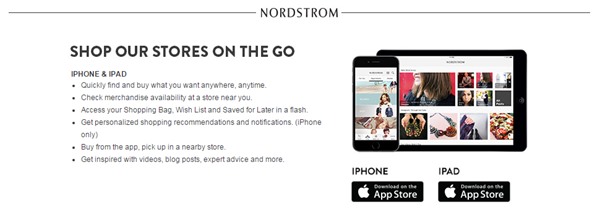Multichannel Differentiation: Lessons From A Top 20 US Retailer

It’s getting more and more difficult for retailers to stand out and make an impact online, particularly when competing on noisy channels that they don’t own, such as social media, influential blogs, third party shopping apps, etc.
Over the past few years, consumers have become better equipped to find the information they need to inform their purchasing decisions. Whether this be finding a review from a third party site, seeking a better price from a competitor or asking a friend through social media, their options have ultimately broadened and as a result, the consumer has become much smarter.
In order to find both online and offline success with multichannel marketing, it is essential for your organisation to diversify your messaging, visuals and product assortments while also testing a variety of other factors as they become relevant. Take the following tips into consideration as you focus your marketing campaigns to encompass a multichannel strategy.
Consider All Avenues When Marketing to the Needs of Your Audience
While much of the conversation around multichannel marketing has focused on the importance of a strong digital or mobile presence, it is only one of the many factors to consider for your marketing efforts. With online retail sales continuing to grow, there isn’t much of an argument against focusing your attention online.
However, multichannel marketing is about considering all customer interactions and aligning your marketing efforts with the needs of your audience consistently, no matter what channel they choose and focusing on only mobile marketing or digital strategies could mean that you’re missing out on several other marketing opportunities.
The brands that can seamlessly balance both their online and offline channels by creating a focused marketing plan, can effectively build a stronger multichannel campaign and have more control over the avenues that influence their customers.
For example, US fashion giant Nordstrom has highlighted many of their channels by incorporating a variety of marketing strategies, such as direct mailings, physical product catalogues, social media content production and mobile app campaigns, amongst others. This directly contributed to a 45.8% increase in online sales 2014/2015, and helped the company reach No.19 in the Internet Retailer Top 500 Guide (2015). Many of these US multichannel giants, including Nordstrom, have capitalised on current marketing trends by expanding their online and social marketing efforts, yet haven’t neglected to continue marketing their brand through more traditional avenues as well. In short, you’ll find that there is a lot for European eTailers to learn from their American counterparts.

While print advertising and newspaper circulars have recently been on the decline, for retailers that market to diverse audiences, these avenues can still influence customers to visit both physical and online stores and ultimately lead to purchases. By continuing to produce product catalogues and deliver newspaper circulars, Nordstrom has ensured not to alienate their existing customers that prefer to shop using those channels.
To differentiate your approach to multichannel marketing, you should consider the needs of your customers on each channel and how your brand should be aligning your messaging to meet the needs of both your customers and marketing goals.
This doesn’t necessarily mean that you need to have a presence on every distribution channel, build a mobile application, or publish on all social networks, it means that you should listen to your customers and conduct comprehensive market research to identify the channels that your audience prefers and ensure that you market a consistent message across those properties specifically.
Influencing Purchasing Decisions with a Consistent Experience
All of your company’s content, social messaging or advertising campaigns offer an opportunity for your customers to interact with your brand. Although this can often be a challenge, a consistent message that aligns your business and marketing goals is essential.
It’s also important to consider that a consistent customer experience goes well beyond your typical branding guidelines and design principles. Both your tone and marketing copy should be designed with your customer’s buyer journey in mind, and serve a consistent purpose to help your reach your marketing goals.

Nordstrom understands that their customers are likely to engage with their brand across many platforms and by adapting their marketing approach to accommodate the needs of a diverse audience, Nordstrom can have more influence over the touch points that their customers find most important when making a purchase. The idea here is that the customer recognises the look, feel and tone of Nordstrom’s messaging, wherever they are engaging with the brand, making it a familiar experience that will more likely drive the desired action from their marketing.
To put it succinctly, follow these tips to differentiate your approach to multichannel marketing:
- Consider both online and offline channels where your customers can interact with your brand.
- Manage a consistent marketing message over a mixture of these channels.
- Ensure that each channel can help your audience through their buyer journey.